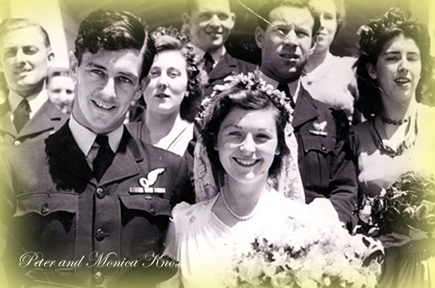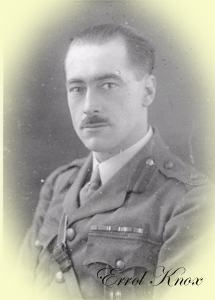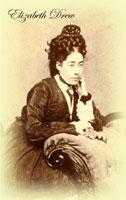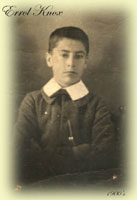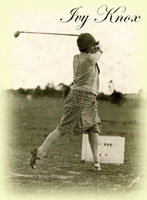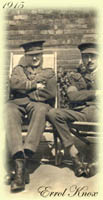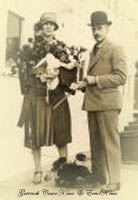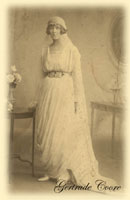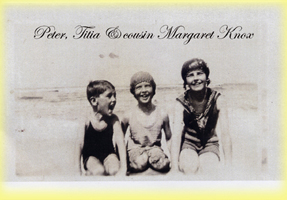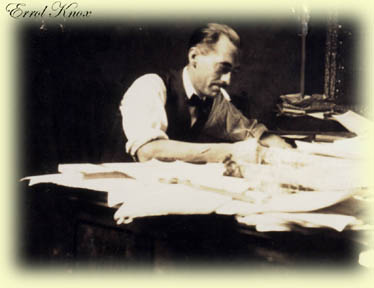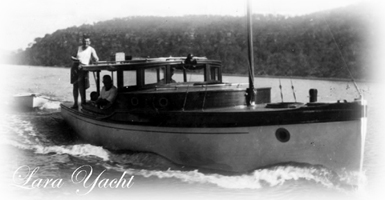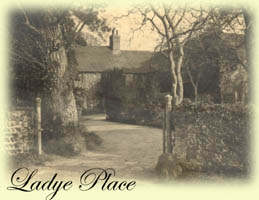|
by Peter Knox
On 17 November 1945
we-- Monica Pauline Newcombe, English and then a Wren serving
with the Royal Navy, and Peter Edmund Knox, Australian and then
a member of the Royal Australian Air Force--married in Melbourne,
Victoria, Australia.
|
|
It is now 1995, the year of our Golden Wedding Anniversary. Knowing
from our research how quickly family history fades away, we have written
down what we know of our antecedents and added an account of our own
lives. This may ease the task of any descendants in future generations
who want to know something of their background. Sometimes
we have had to use our memories of past events described by our
parents. In these cases and throughout this family history we have
tried to avoid folklore and be factual. |
|
|
|
|
1. The history of the Knox side of the Knox-Newcombe
family has as its central point the marriage on 4 September 1919 of
my father, Errol Galbraith Knox, a 30 year old major serving with the
Royal Australian Flying Corps, to my mother, Gertrude Mary Coore, a
20 year old English girl, in Storrington, Sussex. Following their wedding
shortly after the end of the 1914-18 Great War they sailed aboard a
troop ship for Australia and lived out their life together in Australia
where my two sisters, Patricia Monica (always known as Titia) and Pamela
Anne, and I were born
|
2. The first part of this chronicle deals with the
ancestry of the Knoxes and the Coores. The second part deals with my
life. Tracing the history of the two families backwards from 1919 has
been difficult. I did have long talks with the one grandmother I knew,
my mother's mother (Fanny Augusta Coore), about her life. These discussions
took place when I was a young teenager and much of what she said is
long beyond recall. My father and mother both spoke of episodes in their
childhood and youth and I have been able to remember some of this. Fortunately
a cousin, Heather Fearby, who was considerably older than myself knew
our common Knox grandfather and grandmother. He died well before I was
born and she died when I was only two. Miss Fearby provided my sister
Pamela with factual background on the history of the Knoxes. Obituaries
of my father also contained some relevant details. On my mother's side
there is more published information about her ancestry including the
family tree of the Coores.
|
| 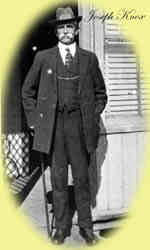
|
3. The first identifiable
Knox is my grandfather Joseph who was born in 1845 in Omagh, County
Tyrone, part of what is now known as Northern Ireland. In 1861, aged
15 or 16, he emigrated to Sydney, Australia, with his family. I have
no information about Joseph's parents but there was one brother, John,
and three sisters, Mary, Sarah and Margaret. The information from Miss
Fearby gives no details of the lives of these three, except that Margaret
"drowned at Hay (a town in the Riverina district of NSW)"
and May "married McBarron and lived at Moss Vale (a country town
in NSW)."
4. Joseph appears to have started work as an upholsterer when he arrived
in Sydney and then switched to working in the grocery section of a department
shop called Civil Service Stores in central Sydney. On 13 June 1870,
aged 25, he married my grandmother, Elizabeth Jane Drew. On the Drew's
side the links with Australia go back, through marriage, to the very
early days of settlement there.
|
| |
|
|
5. Elizabeth Drew's father (my
great-grandfather) was born in Dublin and, according to Miss Fearby,
well might have gone out to Australia as a soldier. There is no indication
when this was. It must have been no later than the 1840s because Elizabeth
was born in 1846 at Parramatta, a town a few miles outside Sydney. Elizabeth's
mother, born Annie Reese (Rees?) (my great-grandmother), was also born
in New South Wales, presumably in the 1820s. She was of Welsh descent
and must have been quite a character. Great-grandfather Drew took himself
off to California to join in the gold rush there in the late 1840s.
Apparently he sent one letter saying that he would be returning to Australia
and was never heard of again. Annie worked as a midwife to bring up
Elizabeth and her two brothers. They lived in Surry Hills close to the
center of Sydney. As she grew up Elizabeth worked for a dressmaker.
6. It was in Surry Hills that Joseph
and Elizabeth set up home after their marriage in 1870. Grandfather
Joseph seems to have prospered as the colony of New South Wales grew
in importance and Sydney asserted itself as the main town in Australia.
He used his knowledge acquired in the Civil Service Stores to set up
his own grocery shop in Forest Lodge, still close to the city center.
Miss Fearby reports "he must have done very well, as he bought
seven houses in the locality and rented them."
|
|
|
|
7. Grandfather Joseph had ambitions beyond the grocery
trade and in the 1890s bought nine acres of land at a place called Wentworthville,
close to Parramatta, 15 or 20 miles west of Sydney. He planted an orange
orchard and a vineyard and had an eight room house built on the property
which he and Elizabeth called Montagis. This was no classic Australian
weatherboard house with a tin top. It was built of bricks and boasted
a slate roof. Joseph had done well. He farmed the land for a time and,
according to Miss Fearby, made grape and orange wine which he sold in
bulk to a wine merchant. As he grew older he worked the property less
and lived off the rent of the shop and of the houses in Sydney. He died
in 1917. Elizabeth went on living there until 1925 when she too died.
The house and land were then sold for £1,000, a handsome price
for that time.
8. Joseph and Elizabeth Knox had raised a large family--three
sons and four daughters. The sons were my uncles James and John Calvin
and my father Errol. The daughters were my aunts Lilian Violet, Myrtle,
Renee and Ivy. My father was the youngest of the seven. In my early
upbringing in Sydney, I knew all these uncles and aunts except for James
who died relatively young leaving a widow and a daughter, much older
than myself. We saw them only very occasionally.
|
|
|
|
9. This is how I remember my father's other brother
and sisters all of whom, except Ivy, died in the 1930s or early 1940s.
Ivy outlived my father who died in October 1949. She must have died
in the 1950s.
John Calvin
Always known to us as Uncle Cal, he belied his puritanical
name and was a gentle character. A school teacher in the public (state)
school system he was assigned to country schools and was a rare visitor.
I cannot recall his wife but he had one son, named Errol like my father.
Errol was deaf as a result of German measles as a young child and had
impaired speech. To my knowledge he had no children.
Lilian Violet
LilianViolet was the oldest of the girls and, I suspect,
my father's favorite sister. She married a farmer called Fearby and
settled in Uralla in northern NSW. She had a son, Alan, and daughter,
Heather (who provided the information about early family history). Alan
became a farmer and had children, at least one of whom also farmed in
NSW. Violet was hospitable. My father spent holidays with her as a boy.
My sister, Titia and I also went to Uralla for a holiday in the early
1930s.
Myrtle
Myrtle was a soft, kindly woman. She worked in an office
in Sydney and until she married, relatively late in life, always bought
weekly comics for Titia and me. Her husband was a minor civil servant
called George Walker. On marriage she moved from our neighborhood and
she and George lived in a small flat in the then respectable Kings Cross
area. George loved Rugby League and until we moved to Melbourne in 1938
Titia and I occasionally had lunch with them and were then taken to
a League match.
Renee and Ivy
Renee (I believe she had a flower name like her sisters--Acacia)
and Ivy were the two youngest sisters. I put them under the same heading
because they lived together most of their adult life. They never married
and, to my knowledge never worked. They must have inherited the income
from the houses owned by the parents and they appeared to live reasonably
well. They played bridge, gave tea parties. Ivy played golf and did
most of the housework. Renee played the piano and read books aloud while
Ivy prepared the meals. They had the top floor flat in a four-story
apartment block in Neutral Bay about half a mile from our house. On
one side it overlooked Sydney Harbor. On the other it had a commanding
view of the road convenient for keeping a somewhat critical eye on the
comings and goings of their neighbors. They were anti-Catholic, could
be sharp tongued and were at times a sore trial to my mother. However,
they tried to be good aunts and my sister Titia and I sometimes went
there for afternoon teas. Ivy encouraged my golf and initiated me to
two or three courses.
10. What sort of a family life did Joseph
and Elizabeth Knox create for their children who grew up in the latter
part of the 19th century? My father did speak occasionally of his boyhood
and, although I cannot recall my aunts discussing their upbringing,
their adult way of life provides certain pointers to the past
|
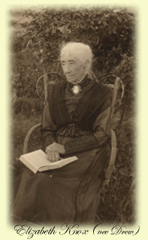
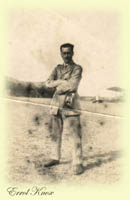
|
|
|
11. One thing is clear. Joseph was a true product of the Presbyterian
sector of Ulster and the Sabbath was sacred. I can recall my father,
Errol, saying that he was not allowed to play on the grass on Sundays
---presumably because such pleasure distracted from strict observance
of the sacred day--and was not allowed to enjoy himself on Saturday
evenings because "it was too close to the Sabbath." Church
going and biblical readings were a duty on Sunday. I am sure that Elizabeth
was a good and virtuous mother. My father spoke fondly of her. However,
it must have been a rather somber house with strict rules.
12. Joseph and Elizabeth obviously saw
to it that the family were as well educated as the state system of the
day allowed. They must have encouraged study and a sense of discipline.
The sons were all groomed for what would be called today "white-collar"
jobs. The Knoxes did not aspire to being part of Sydney society but
were well regarded in the Wentworthville area and neighboring Parramatta.
There was enough money for the girls to be able to develop desirable
Victorian social accomplishments like music and embroidery. None of
the family showed any great skill at sport and one must doubt that it
was encouraged.
13. My father was clearly required to
work on the small farm. He must have enjoyed it because all his life
he had a great love of working the land and, in the way of farmers,
was quite skilled with elementary mechanics and could turn his hand
to building a brick wall, working with cement or mending a car or yacht
engine. One imagines that in the fashion of the day his sisters were
made to work around the house. I never heard my father talk of holidays
except to go and stay with his married sister Violet on her farm. He
was not a strong swimmer and I do not think that the Sydney surfing
beaches played any part in his early life.
14. Joseph and Elizabeth were loyal subjects
of the crown. My father told me how he was taken to the celebrations
of Queen Victoria's jubilee. At the same time there is no indication
that they had any close links with the "mother country." Joseph
never went back to Ireland nor seems to have urged his children to do
so. They seem to have very much identified themselves as Australians.
My father told me that as a schoolboy he participated in the celebrations
in 1901 when Australia shed its colonial ties and became an independent
country within the British Empire. Except for him, none of the family
left Australia and to the best of my knowledge, never even left New
South Wales. Indeed, in many other ways my father, the last-born, differed
from his brothers and sisters. Whereas they, with the possible exception
of Lillian Violet, the farmer's wife, were content with a secure small-time
life style, conforming to the rigid social pattern set by the parents,
he was a restless spirit, blessed with a first class brain, a depth
of vision and a desire to see the world outside Australia.
15. He had been born on 25 June 1889
in Sydney before the family moved out to Wentworthville. I know nothing
of his infancy and although throughout his life he suffered from poor
eyesight I assume he was a reasonably robust child. He must have been
bright because after primary school he qualified to enter Fort Street
High School, one of the two leading schools in the New South Wales state
system. My father was proud of his association with this school, which
produced a number of prominent Australians. It was situated close to
the center of Sydney and the harbor. Since the family by this time was
living in Wentworthville it meant a long train journey to school. My
father, who had a good sense of humor and a way with words, liked to
recall that they had an old Irish conductor who used to call out the
names of stations "Road to Hell" (Rooty Hill), "Go to
Hell," (Goats Hill) and "Went to Hell" (Wentworthville).
16. From Fort Street High he went to
Sydney University to do a general arts course. I know from a story he
used to tell that one of his subjects was philosophy. English must have
been another because throughout his life he could quote at length from
various Shakespearean plays. He had a strong memory. He stayed at University
for two years and then abandoned his course in 1910 to go into journalism.
I do not know the background to this decision. He was an impatient man
and quite probably was bored with being a student and anxious to make
his way in the world. Perhaps he needed to make money. His parents by
this time were running down their farming interests and living off their
investments in property.
17. He worked on newspapers in Sydney
for three or four years. Then early in 1914 he went to California and
found work there in San Francisco on newspapers in the Hearst chain.
This was a period in his life about which he often told us stories.
I think he liked the United States and the exciting future it offered.
He might have stayed there if the First World War had not broken out.
Early in 1915 he returned to Australia and in July enlisted as a private
in the Australian Imperial Force (AIF).
|
|
|
|
18. He was commissioned in September and in January 1916 embarked
for Egypt, a training ground for the Australian forces overseas. From
Egypt he went to France where, in January 1917 he joined the Royal Australian
Flying Corps. He had always been fascinated by flying from its infancy--he
was always forward looking and embraced new idea with enthusiasm--and
had witnessed some of the first attempts at flight in Australia. His
bad eyesight debarred him from becoming a pilot but he told me he did
some flying on observation work. Essentially, however, he was an administrator
and served as a recording officer and as an adjutant. He was gassed
and also hospitalized for appendicitis. As indicated above it was while
he was recovering in England that he met my mother. By the end of the
War in November 1918 he had become a major. He served until July 1919
with the British Army of Occupation on the Rhine. For his war work he
was twice mentioned in dispatches and awarded the MBE.
19. On 4 September 1919 he and my mother were married
and left shortly afterwards for Australia aboard a troopship. My mother,
who had never left England before, told me she was horrified when the
ship reached Fremantle in Western Australia and she saw the tin roofs
and drab colorless buildings of the docks area. She burst into tears.
Fortunately, the ships final destination was Sydney and it sailed into
the Harbor on a lovely summer day early in 1920. Although homesick,
she was enchanted and vowed to live close to the water. They set up
their first home at the head of Shellcove Bay between Cremorne and Neutral
Bay on the north side of the Harbor opposite to the central business
and shopping areas of Sydney. There was no bridge in those days and
travel to the city was by ferry boats for pedestrians and by punts for
cars. My father resumed his journalistic career. My mother started a
family. The story of their life together introduces my life and is recounted
in the second part of this narrative.
|
| |
|
|
20. My mother was not allowed to sever her English
links. She was followed to Australia early in the 1920s by her mother,
one sister and a brother. The story of the Coores and the reasons for
their migration to Australia follows.
36. As indicated earlier my father Errol
and mother Gertrude made their first home in Sydney on the north side
of the Harbor. It was in Bannerman Street between Cremorne and Neutral
Bay at the top end of Shellcove Bay and was close to, but not bordering
on, the Harbor. It was in this house that my sister Patricia (Titia)
was born on 28 September 1920 and I was born on 16 November 1923. Home
births were then the custom. I know only that I was due on the anniversary
of the 1914-18 World War Armistice Day, November 11, but arrived five
days late on Friday, 16 November and spoiled everyone's fish supper.
It was an uncomplicated delivery and my mother had good help. My father
had returned immediately to journalism and made his mark. After short
spells on Smith's Weekly and the Daily Telegraph ( a morning paper),
he had been made managing editor of the Sydney Evening News in 1922.
He was earning a good salary and we had a live-in Nanny--"Nin."
She was an English migrant named Schobell, who married and became Mrs.
Turner. She brought two brothers to Australia through the Doctor Barnados
scheme, Charlie and Cyril. The former did extremely well in the grocery
trade and the latter, who lived with us for a time, became a well established
plumber. In 1923 "Nin's" task was to look after Titia and
me.
37. Sometime shortly after my birth we moved to a house
about a mile away--this time with a view of, and access to, the Harbor.
It was on Shellcove Bay close to Kurraba Point. I remember nothing of
it. It was not a happy house for my mother. While living there she contracted
typhoid fever from eating oysters grown in Sydney Bay. Later these beds
were to be banned as the authorities became more aware of the health
risks of dirty harbor waters. My mother was seriously ill and the disease
left her with a stomach weakness which at times caused her great discomfort
in later life.
|
|
|
|
38. These were critical years for her. She had gone
to Australia aged 20 and had a great home-sickness for England. Life
in those first few years cannot have been easy. While starting a family,
she had to adapt to a new country and to an Australian climate and way
of life for which her upbringing in England had scarcely prepared her.
She must have seen a raw side of life that was foreign to her. Journalism
in Sydney was a tough world. My father told me that one of his rivals
boasted that he had "broken all ten commandments." His work
was demanding and time consuming. There must have been times when she
was lonely. However, the Evening News was doing well under his management
and had become a strong competitor to the Sydney Sun, the more established
afternoon paper. He was close to the top of his chosen profession and
was now able to give my mother her two fondest wishes--a trip back to
England and a house on the brow of Kurraba Point overlooking the Harbour
with an acre of ground and a large water frontage.
39. The trip to England came in 1927.
It was part business, part pleasure. This was long before the days of
plane travel and the journeying was done by steamer and rail. We sailed
from Sydney as a family with a nursemaid called Biddy to look after
Titia and me and a number of large cabin trunks. Our travels took us
to Canada to buy newsprint and to the United States to see the latest
printing machinery. My father was always fascinated by new developments.
He understood the way journalism was heading and recognized the need
to invest in the future. I was only three and have no real memories
of the trip. It was, however, well documented with family photos. We
traveled extensively through England and Scotland and also went to Ireland.
Travel in those days was leisurely and it was accepted that businessmen
would be away from Australia for several months. The return trip took
us once again to the United States and Canada and at one stage we rode
on horses through the Rocky Mountains. I suppose I was carried on my
mother's mount. For years afterwards I received a magazine as a member
of the "Trail Riders Club."
40. While we were away the house was
being built. My mother told me that the trip back to England helped
her overcome her home sickness. She knew that she was not irrevocably
cut adrift from what she still then--and indeed throughout her life--saw
as her homeland. I think that the process of settling down in Australia
was also helped by moving into the house about the same time as having
a new baby, my sister Pamela born in August 1928. With two girls and
a boy she felt her family was complete and the house was in the best
sense of the words, her dream home. Upstairs it had four bedrooms in
the front, two of them giving on to covered balconies with commanding
views of the Harbor, and three rooms at the back. "Nin" and
her husband, now working as a married couple, used two of these. I had
the third. Downstairs a dining room and a drawing-room also overlooked
the Harbor. Unusual for pre-war days it had twin garages on the road
above and to the rear of the house. Beneath them was a bedroom in which
Nin's brother Cyril lived. The grounds were terraced down to the waterfront.
On the first level below the house there was a grass tennis court. On
the next level there was a vegetable garden, fruit trees and a chicken
run. At all levels there were flower gardens. On the waterfront, on
the Shellcove Bay side of Kurraba Point, a reasonably shallow part was
fenced off (later a concrete wall was built) to make a harbor swimming
pool. There was a boat shed with good deep water for a yacht and plenty
of rocks for fishing.
41. I am sure that the first few years
in this house were among the happiest of my mother's and father's life.
He had a yacht called the "Lara" some 30 feet long with a
small galley and bunks for four or five people. He moored it in Shellcove
Bay in front of the boatshed. It had sails but he preferred to use it
as a motor boat. His great joy was to take it to Brokem Bay some 30
miles north of Sydney and spend a week or two there with three or four
men friends. It meant a sea trip in fairly rough waters but he loved
the challenge. He did not enjoy swimming and, with poor eyesight, he
was an enthusiastic but only moderate tennis player. He was at the height
of his professional life and too busy to be a regular gardener but he
loved planning the property and building banks and walls. He was a good
driver and was very proud of his Armstrong-Siddeley sedan.
42. My mother loved the swimming and the tennis and
was an enthusiastic "green-fingered" gardener. In addition
to flowers and vegetables she grew passion fruit and nurtured a most
beautiful frangipanya tree. She was an animal lover and was never without
one or two dogs and a cat. Cocker spaniels were the early favorites.
My father insisted that as good Australian dogs they should live outside
the house. From the day one was found dead in the morning from a tick
in the ear dogs slept inside. My mother was tall (5 feet and 10 inches)
and bordering on being thin. She loved the warmth of the Sydney sun
but as a good English woman generally kept herself well shaded. She
had no fear of Australian insect and reptile life and one of my earliest
memories is of her shrieking with laughter as we ran away while she
held up a very big blue tongue lizard. She had her own little red two
seater baby Austin sports car.
43. There was a lot of social activity.
A group of 8 to 10 friends regularly played tennis on Saturday afternoons
and as a good Australian housewife my mother had to turn on teas complete
with sandwiches and cakes. She became in fact a very good cake-maker.
Once a year there was an all-day tournament with a substantial buffet/picnic
lunch. The tennis playing friends came from all walks of life. I can
recall two or three doctors, a journalist, a publisher and one or two
businessmen. Some were neighbors, some came from further afield. The
entertainment was always genuine and never ostentatious. There was a
very occasional party. The house had a large hall and I can recall one
very swinging New Year's Eve "do" which I was allowed to watch
briefly from the top of the stairs. My mother was still in her twenties
and loved dancing. My father gave her a gramophone with an electrically
drive mechanism which lifted records off a spool, placed them on a turntable
and then deposited them in a padded container. In this way eight or
ten records could be played in succession automatically.
44. The great economic depression of the 1930s brought
the golden days of life at Ladye Place to an end, at least for my parents.
In about 1931 the owners closed the Evening News and for the next six
years my father used his ingenuity and drive to make a living working
on his own. He edited two editions of Who's Who in Australia, published
Knox's Medical Directory, brought out a short-lived monthly news magazine.
Inevitably his income in this period slumped. The yacht was sold. Entertainment
was restricted to the tennis parties. Ambitious overseas trips were
out.
45. Paradoxically the closure of the
Evening News came when I was about eight and of an age to enjoy life
in a house on the harbor with a swimming pool and a tennis court and
adjacent to the still largely undeveloped Kurraba Point with acres of
open land to play in. Personally I was cushioned from the effects of
the Depression and the ills of the world. We were, however, aware of
the dole queues and the hardships of others. News always had a priority
in the house. We had wireless sets from the earliest days of radio.
The daily newspaper was delivered early in the morning by a man with
an open car. He twisted the paper and threw it like a boomerang into
the driveway. I usually got to it first. The unemployed came to the
house looking for work. Among them, I recall, an ex-vicar from England
who appealed desperately to my mother as a compatriot.
49. At home we were fully occupied. In
the early 1930s there was one other family on Kurraba Point--the Whites.
He was a successful timber merchant and race-horse owner and shrewdly
bought up much of the still undeveloped land. They had two girls, Babette
and Dell, and a boy, Baden, of about the same age as Titia and me. Baden
became a pilot in the RAAF during the War and was killed flying over
England. In childhood we swam and played tennis together and roamed
the harbor shore by our homes. As the Point was developed and school
friends came of an age to visit, so our circle of friends expanded.
Titia was a good tennis player and was coached at school. An eager older
sister she coached me in turn. We had a carefree, rather idyllic, life.
During the long summer vacation (December and January) we lived in bathing
costumes and khaki shorts. More often than not and by preference we
went barefooted. As I grew older my father encouraged sailing. Although
he had sold his yacht he had kept the 10 foot dinghy and he rigged it
up with a mainsail (later a small bowsprit and gib sail were added).
He taught me the "rules of the sea" (who had the right of
way etc) and the rudiments of sailing and then, when I was 11 or 12.
set me free to wander round the harbor with different friends. He believed
implicitly in self-reliance and trust.
50. We had very occasional holidays.
I got my first introduction to surfing when I was eight or nine and
we took a seaside chalet at Newport a few miles north of Sydney. As
the family budget tightened we had the odd week away at boarding houses
in the country--I can remember going to Bowral and a place on the western
slopes of the Blue Mountains to the west of Sydney. A visit to our cousins,
the O'Briens, at their Tumbarumba farm was memorable because another
car ran headfirst into ours going around a mountainous bend close to
our destination.
Fortunately my mother, a good driver, had managed to stop. We were going
uphill--the other car was coming downhill and didn't. No one was hurt
but our car's steering suffered and the rest of the journey was a bit
of a nightmare. We were not lucky with cars and holidays. On another
occasion we toured the south coast of New South Wales and got marooned
in bad floods at Narooma. Heading back to Shellharbour, closer to Sydney
and with better weather at the time, our old Armstrong Siddeley's clutch
packed up. Our father somehow got it back to Sydney where he did a deal
with his bankers and bought a new Ford V-8. This was in 1935 when his
fortunes were at a low ebb. I can remember his broad smile when he came
back to Shellharbour to pick us up. The purchase of that new car was
a great boost to his self-esteem . He loved the big generous gesture.
When Titia became quite seriously ill in 1936 with nephritis, a kidney
disease (diagnosed by a specialist called to the house by our parents
in defiance of the GP who believed that illness could best be cured
by nature and, failing that, the knife), he sent Titia with my mother
and Pamela by coastal steamer to the Barrier Reef, then an unexploited
resort area. My schooling could not be interrupted. As a consolation
prize, I accompanied my mother and two sisters on the steamer to Brisbane
and then flew back to Sydney. The aircraft was an old Stinson twin-engined
plane which carried a handful of passengers. I was the envy of my school-friends.
Few, if any, had flown. Even in the late 1930s aviation was still in
its infancy.
46. I had started school life aged five
at the Loreto Convent, Kirribilli, where my sister Titia was already
well installed. Occasionally our mother picked us up in the car but
generally we went by ferry boat--it was one stop from Kurraba to Kirribilli
and Titia must have been made responsible for me.
At the age of eight I started with the Jesuits at St.
Aloysius College. It was located at Milson's Point, adjacent to Kirribilli
so there was no change in the travel arrangements. A ferry from Kurraba
to Kirribilli and then a half mile walk. Sometimes I would meet a friend,
sometimes walk alone. Titia traveled at different times. In those days
children moved about independently. The streets were not considered
dangerous and it was accepted that we were wise to the ways of the water.
47. St. Aloysius was the Jesuits' day
school in Sydney and ranked below St. Ignatius (Riverview) their big
boarding school on the outskirts of the city. Riverview was one of Sydney's
eight public schools. St. Aloysius was in a group of grammar schools.
Both these sets of colleges were private and fee-paying and run by the
major Christian denominations. In the 1920s when family finances were
strong it had been planned that I would start at St. Aloysius and then
go on to Riverview as a boarder. By the time I started at St. Aloysius
in 1932 even its modest fees were met with difficulty. I was to stay
there for six years until we left Sydney for Melbourne. It was a good
school run on classical Jesuit lines. In the Junior school we started
in Elements, went on to Rudiments and then to Grammar. The Rector was
a Stonyhurst educated Irishman, Father Austin Kelly. The Prefect of
Studies was a dynamic little Australian priest, Father Thomas Hehir,
always known as "Tinny" (Greyhound racing using tin hares
was a big attraction in those days). To teach us, there was a seemingly
endless stream of Irish novices with a smattering of Australian recruits
to the Order. Australia was a mission post for the Irish Jesuits and
these young "scholastics" did their teaching stint and then
returned home to complete their studies and be ordained (it was a 15
year haul from entry to ordination).
48. The Jesuits kept us busy. Twice a
week after school we walked to a sports ground about a mile away for
cricket and football practice. Most Saturday mornings there was a match
for the under tens upwards. St. Aloysius specialized in Gilbert and
Sullivan productions from which I was quickly dropped but there were
debating clubs and plays. We had to take our turn at serving the tridentate
Latin Mass celebrated privately before school by one of the old priests.
There was frequent benediction and rosary for the whole school during
the day--attendance compulsory. We generally took sandwiches to school
and ate them in the playground. The alternative was to go to a local
shop which sold meat pies. Because times were hard in the Depression
the fee-paying schools suffered. Classes were quite small and I was
able to do reasonably well at studies and get into the various teams.
I was never bored.
|
| |
|
|
|
Contact Us | Site Map |
